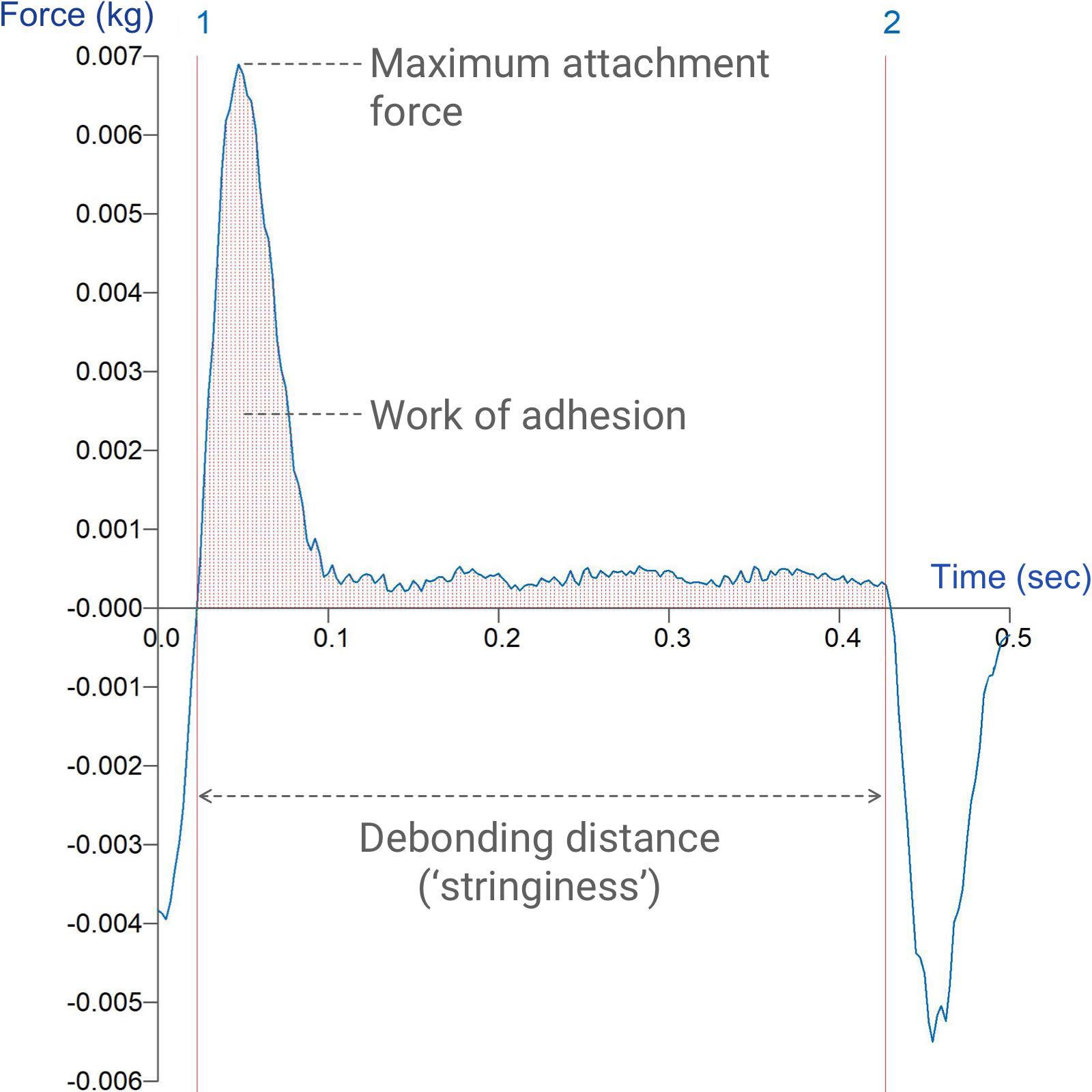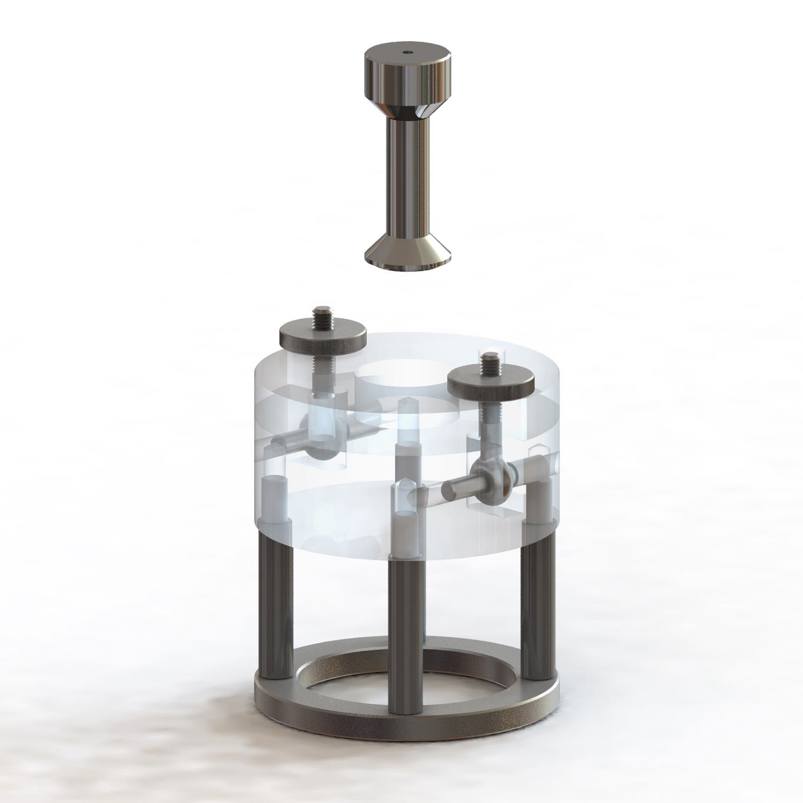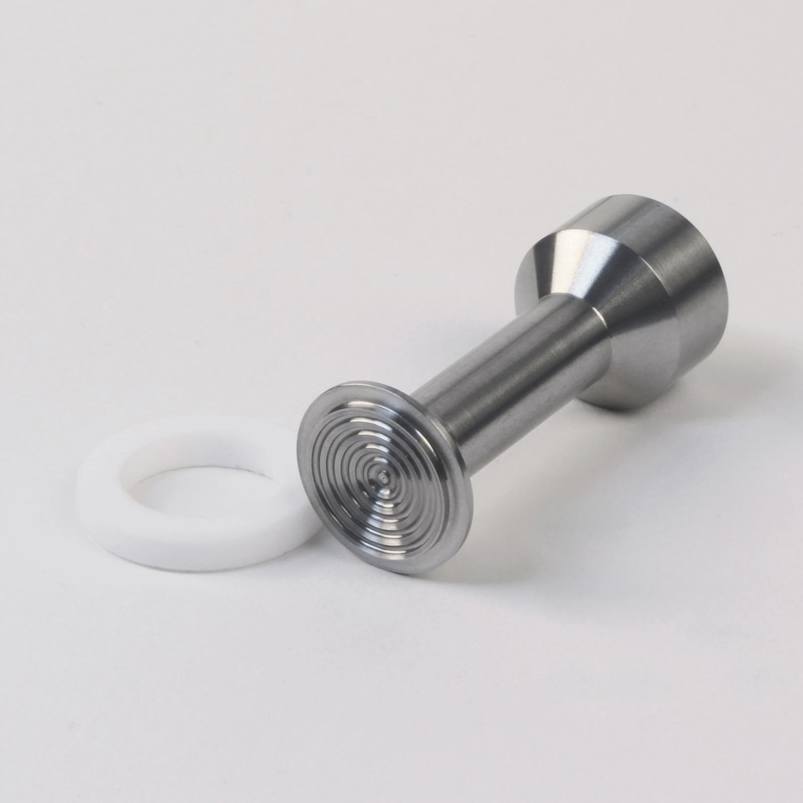Product overview
The Gel Mucoadhesion Probe, which was assessed at the University of Iceland as reliable and repeatable, consists of an inverted cone shape at its end which has machined concentric grooves. These grooves encourage the attachment of a controlled volume of hydrogel sample to the probe surface area. For constant gel volume application the use of a syringe is recommended. A PTFE collar is supplied to support larger volumes of hydrogel loading which is removed when the gel is set. The Gel Mucoadhesion Probe is used in conjunction with the Mucoadhesion Test Rig, substituting the 10mm cylinder probe and sample supporting ring.
Mucoadhesion Test Rig (A/MUC) not included but required.
How does the Gel Mucoadhesion Probe work?
Typical graph

Technical information
Ideal sample form
Liquid gels that can be syringed onto the end of the probe in order to set into the concentric rings.
Benefits and limitations
- Allows the mucoadhesion testing of gels which would otherwise not be possible
Installation
Full installation instructions are provided within the Education Zone of the latest Exponent/Connect software version and on the technical information sheet accompanying this product.
Chemical compatibility
Stable Micro Systems probes and attachments are commonly made from four materials: anodised aluminium (AA6082 T6), stainless steel (316 T), Delrin (acetyl copolymer) and Perspex (polycarbonate).
In general use, probes and attachments made from these materials will be suitable for testing food products and inert non-food materials.
The four materials listed above are not universally resistant to all types of chemicals and as such the compatibility of the probe/attachment material with the product (to be tested) must be established to prevent damage to the probes and attachments. If the compatibility of the product with the probe is unknown to the customer then the chemical information about the product (Material Safety Data Sheet or Product Data Sheet) should be submitted to Stable Micro Systems. Stable Micro Systems will then assess the suitability of the probe/attachment material for use with the product and advise accordingly. If this advice is not sought then Stable Micro Systems will not accept liability for probes/attachments damaged by chemical attack from the product being tested.
Cleaning and maintenance
All probes and attachments may be cleaned in warm (or hand hot) water using a mild detergent. A soft brush may be used but abrasive cleaning aids should be avoided. Stable Micro Systems products should not be microwaved or cleaned in a dishwasher.
Screw threads should be lightly lubricated after drying using a light lubricant, e.g. petroleum jelly, mineral oil. This will aid the fitting and unscrewing of the item. Each component of a probe or attachment should be wrapped separately when stored, to avoid scratching or chipping. This will safeguard against any unnecessary damage to the accessory.


